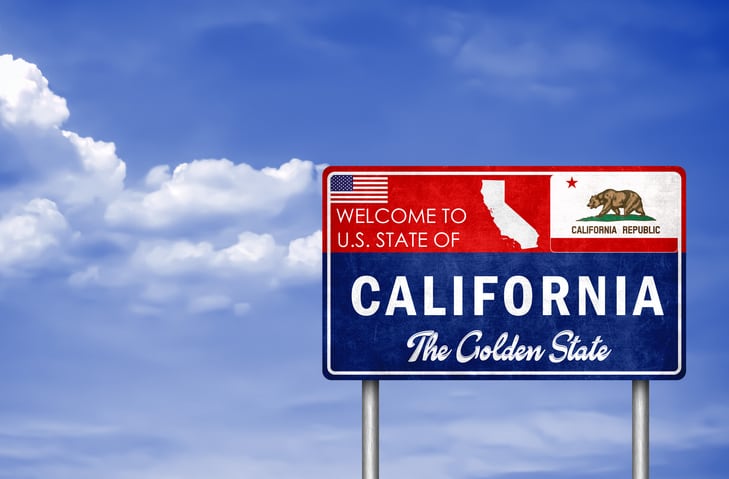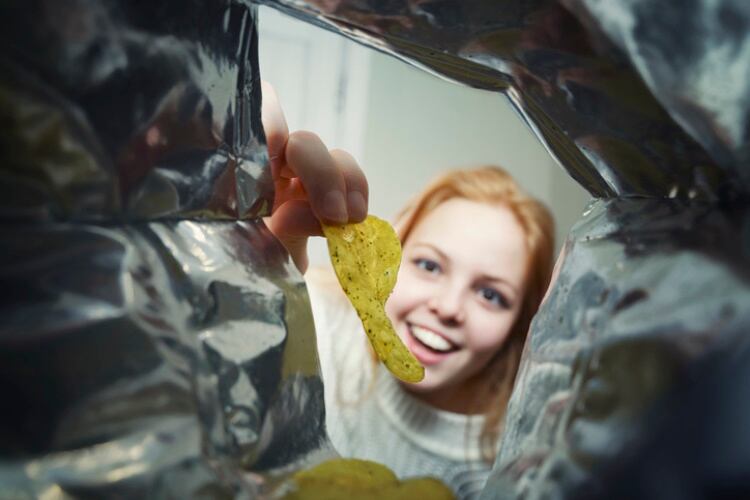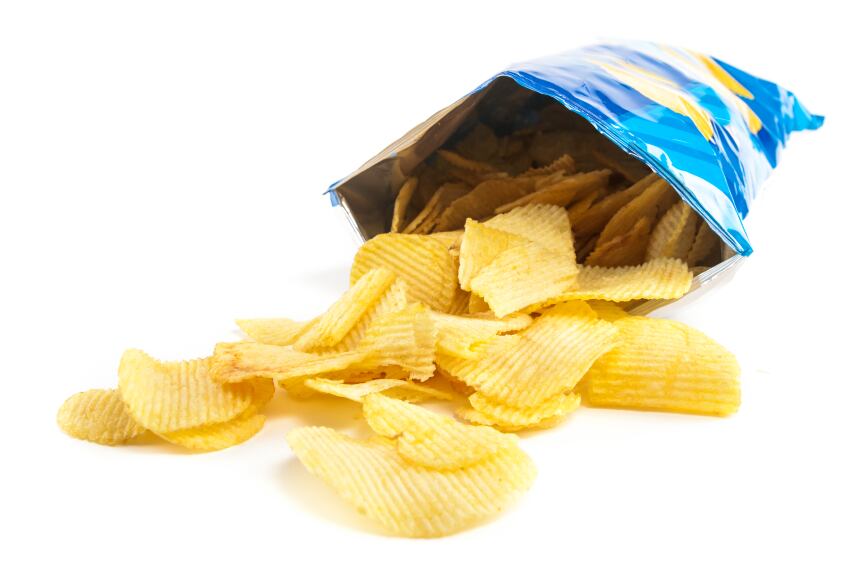PepsiCo is under fire for packaging that’s big on puff but allegedly light on product. Bonnie Reyes, who brought the case in the US District Court for the Central District of California, says she paid $4.79 for a 7oz bag of Sea Salt PopCorners and got far less than she bargained for.
According to the complaint, the bag was “over half empty,” with far more air than chips.
The lawsuit goes further, accusing PepsiCo of using opaque and oversized packaging that allegedly makes it impossible for shoppers to see how much product is actually inside.
Reyes’ lawyers argue that PepsiCo’s use of nonfunctional slack-fill – the technical term for unnecessary empty space inside a food container – violates California’s consumer protection laws, as well as federal packaging rules.
While a certain amount of air is permitted to protect the product or allow for settling, the complaint contends PepsiCo’s packaging goes well beyond what’s necessary, misleading consumers into thinking they’re getting more snack than they actually are.
“Defendant deceptively sells its products in oversized packaging that does not reasonably inform consumers that they are over half empty,” the lawsuit states.
The fight over air

Most consumers accept a bit of empty space in snack bags. A limited amount of slack-fill is permissible in food packaging when functionally justified, typically to prevent breakage or allow for product settling. However, when that void space exceeds functional need and the packaging obscures the actual contents, it may violate state and federal labelling laws designed to protect consumers from deceptive marketing.
Reyes’ lawyers point to both state and federal regulations that draw a firm line between functional and nonfunctional slack-fill. Under California’s Business & Professions Code § 12606.2, packaging is considered misleading if it contains nonfunctional slack-fill and does not allow consumers to clearly view the contents.
At the federal level, 21 CFR § 100.100 states “a food shall be deemed to be misbranded if its container is so made, formed, or filled as to be misleading” and specifically notes that “an opaque container shall be considered to be filled as to be misleading if it contains nonfunctional slack-fill.” These laws form the backbone of Reyes’ argument that PepsiCo’s packaging isn’t just disappointing – it’s unlawful.
The complaint makes it clear the decision to purchase PopCorners was influenced by the size and appearance of the package. “Plaintiff purchased a bag … relying upon the mostly opaque packaging … She would not have purchased the Product … had she known that the size of the container and product label were false and misleading,” it states.
Reyes is seeking class certification for all California consumers who purchased PopCorners snacks in similar packaging over the past four years. She’s also asking the court for financial damages and a permanent injunction – forcing PepsiCo to repackage its product more transparently, whether that means smaller bags, visible fill lines or some sort of honest design change.
PepsiCo hasn’t yet issued a public response, but it’s likely the snacking giant will argue that its packaging is compliant, that net weight is clearly listed on the bag and that any air space is functional. These are the standard defences in slack-fill cases – but they don’t always hold up in California court.
California cracks down while other states stay quiet

California is widely seen as the most aggressive US jurisdiction when it comes to packaging transparency.
In 2018, the state enacted AB 2632, formally codifying strict rules around slack-fill in food packaging. The law prohibits nonfunctional slack-fill in opaque containers unless one of eight narrowly defined exceptions applies. These include requirements related to product protection, mechanical needs during filling, unavoidable settling or packaging design necessary for tamper-evidence or resealability.
What makes California’s law stand out is how specific it is. Unlike most other states, California provides a direct legal framework that consumers and class action lawyers can use to challenge deceptive packaging. Violations can result not only in monetary penalties, but also in product seizure.
California courts have already seen a series of slack-fill cases involving major snack and candy brands. In Izquierdo v. Mondelez, filed on 20 June 2016, a federal judge refused to dismiss the case over Sour Patch Kids boxes, noting that a “reasonable consumer” might be misled by the size of the box – even if net weight and piece count were accurately printed. That case, brought in the Southern District of New York, found that a box designed to fit 50 candies but containing only 28 pieces (about 44% empty) could mislead despite transparent labelling, as long as consumers relied on visual perception.
Another notable case was Stemm v. Tootsie Roll Industries, filed on 19 March 2018 in the Northern District of Illinois, which alleged that Junior Mints theatre boxes contained approximately 44% non-functional slack-fill. Although the court ultimately dismissed the suit citing insufficient proof of actual harm, it did highlight the growing consumer concern over underfilled packaging.
Then there’s Iglesias v. Ferrara Candy Company, filed on 21 February 2017 in Northern District of California, targeting cinema candy boxes (including Lemonheads and Jujyfruits) that were allegedly more than 40% empty. That one concluded with a $2.5 million settlement and a requirement that Ferrara maintain theatre-box fill levels of at least 75%, with lighter ‘bag-in-box’ products filled to at least 50%.
These cases lay the groundwork for Reyes’s lawsuit. Mondelez and Tootsie have defended their packaging by pointing to clear net-weight labelling and product protection – in line with FDA tolerances – but federal and California precedents show that packaging perceived as misleading, regardless of printed labels, can still be challenged under consumer protection laws.
Together, these cases reveal how packaging lawsuits can hinge on two key questions: Was the consumer’s impression shaped by the size of the container? And was that impression misleading, even if the product weight was technically accurate?
Other states, meanwhile, tend to rely on more general consumer fraud laws. Missouri, for example, has seen slack-fill claims filed under its Merchandising Practices Act, while New York and Illinois allow such lawsuits under broad deceptive trade statutes. But without California’s precise statutory language and its clear definition of nonfunctional slack-fill, enforcement in those states is inconsistent at best.
So, how much air is in a chip bag?

The issue of excess air in snack packaging isn’t just anecdotal. It’s been measured.
In 2018, SEAL Packaging, a UK-based manufacturer, commissioned engineering students at Arizona State University to conduct a series of tests measuring air content in popular US snack brands. Using water displacement to calculate package volume versus product volume, the students found Cheetos bags contained around 59% air; Doritos 48%; and Popchips more than 50%. Fritos, by contrast, came in at just 19% air – demonstrating that significantly lower slack-fill is technically feasible, depending on the product and packaging choices.
While the ASU test results suggest wide variation in air content, manufacturers argue that nitrogen is essential – not excessive. It serves a technical purpose: preserving freshness, preventing breakage, and stabilising the packaging.
There is, in fact, sound scientific justification for using gas in snack packaging. Nitrogen displaces oxygen to preserve flavour, texture and aroma, and acts as a cushion that prevents breakage during packing and shipping. Food scientists and packaging engineers have long noted that nitrogen also protects against humidity and pressure changes, especially during air transport, helping prevent bags from bursting or going stale prematurely.
While this functional slack-fill is permitted, the PopCorners lawsuit argues that PepsiCo goes far beyond what’s necessary – raising legal concerns around both volume and visibility.
When slack-fill meets sustainability

The implications of slack-fill also go beyond consumer disappointment. Recent research has reframed the issue as not only a matter of deceptive marketing but also one of environmental concern.
A 2024 report from Australian marine watchdog Tangaroa Blue Foundation – titled Wasted Space: An Investigation into Non-Functional Slack Filling – analysed product packaging across multiple countries and found that excess air doesn’t just mislead shoppers; it drives up material usage, inflates transportation volume and contributes to retail inefficiencies. The report, cited by environmental groups pushing for stronger global packaging standards, argues that slack-fill is a systemic contributor to both plastic and carbon waste.
Across the Atlantic, the European Union has responded with proposed legislation aimed at curbing non-essential packaging. Published in 2022, the draft rules call for eliminating unnecessary slack-fill across all consumer goods, part of a broader plan to reduce packaging waste by 15% per capita by 2040. While not yet in effect, the proposal signals growing regulatory pressure to treat slack-fill not just as a legal grey area but as an environmental liability.
Taken together, the emerging body of research and policy shows that underfilled packaging is no longer merely a tactical design choice or an overlooked industry norm aimed at protecting contents. It’s now recognised as a global concern – one that affects everything from shelf space and consumer trust to transportation emissions and climate targets. What was once dismissed as harmless marketing optics is now being challenged in courtrooms, policy forums and by increasingly vocal consumers.
Back in California, Reyes’s case is likely to test the boundaries of what qualifies as deceptive slack-fill. Is it enough to argue that the weight is accurate and the air is there to prevent breakage? Or does the visual misrepresentation outweigh those defences?
Either way, the case could change how companies approach package design, especially for better-for-you snacks that command premium prices. If shoppers are paying nearly $5 for a bag of air with a handful of popped rice chips, it’s not hard to imagine why some are pushing back.
Reyes v. PepsiCo Inc., Case No. 2:25‑cv‑04951, filed 1 June 2025, in the US District Court for the Central District of California.




